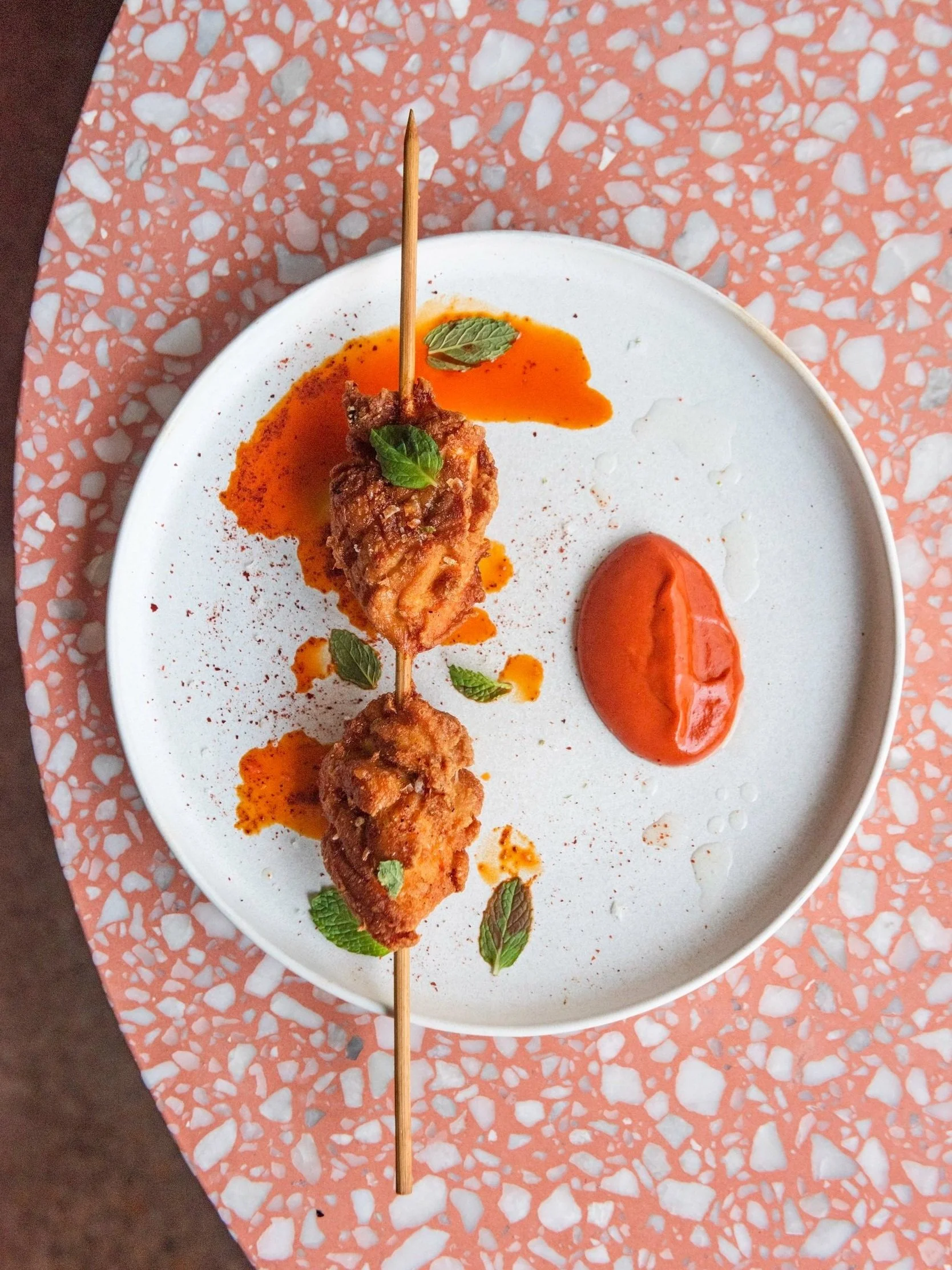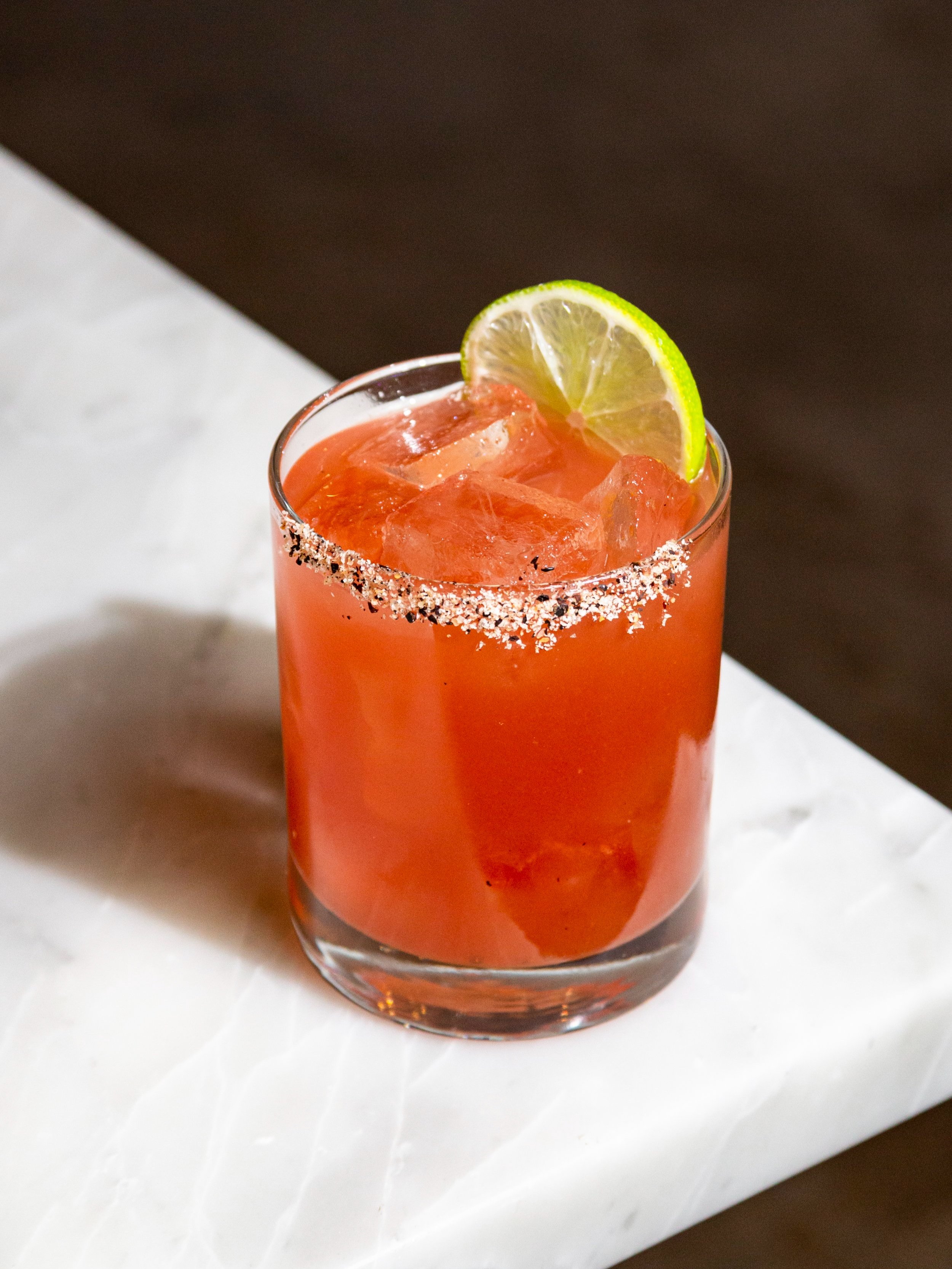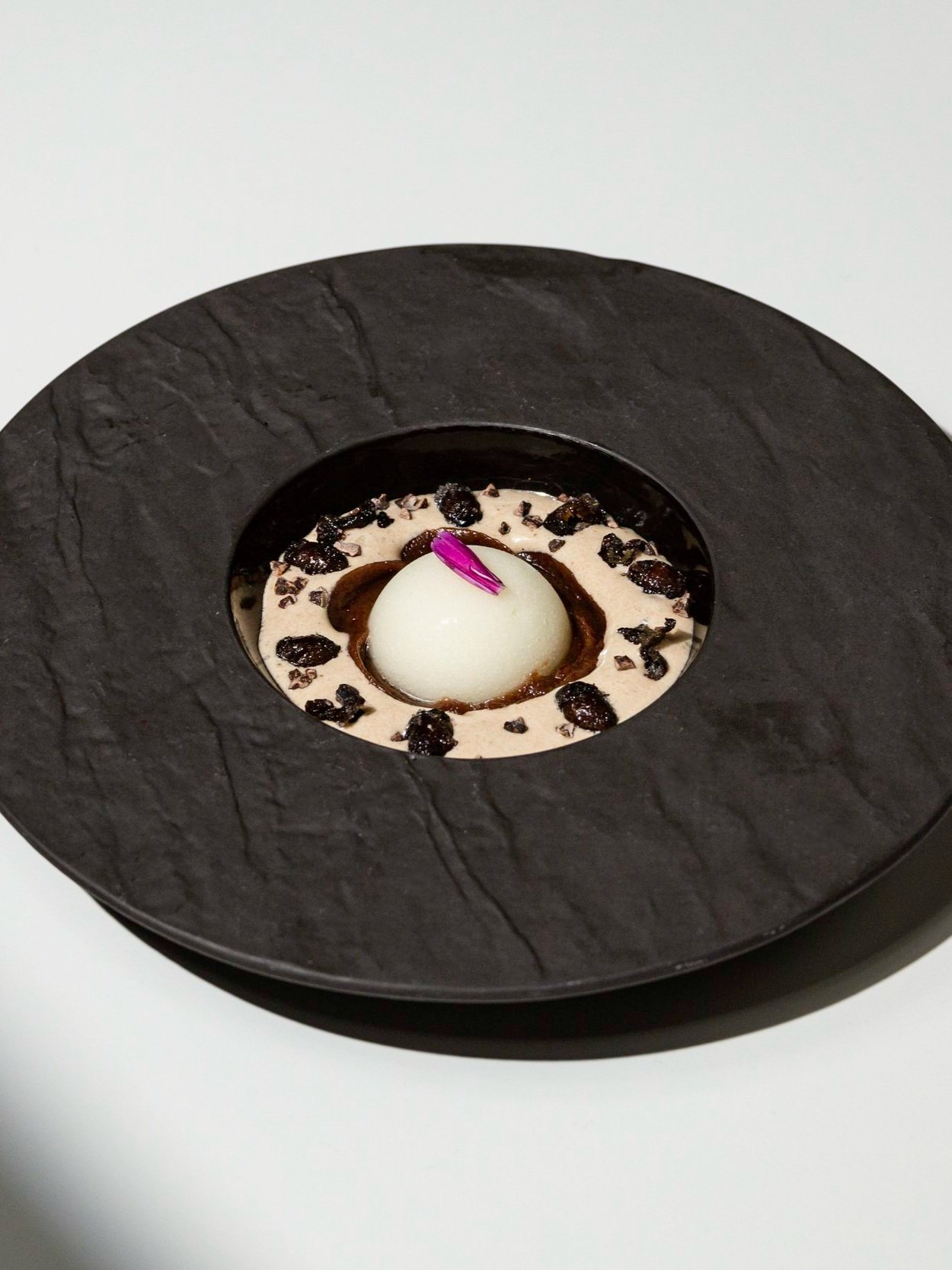2023 Portland Kitchen Notebook
An in-depth look at some of our favorite dishes and cocktails from our time on the ground in Portland, OR.
wild rice pilsner
Like many great food and beverage inventions, Brewer Michael Lockwood’s Wild Rice Pilsner came from experimenting with someone else’s byproduct. His friend, a cook at Kachka, was using wheat berries and wild rice grains as pie weights to prep for a special holiday meal. “My buddy asked me if I wanted [the grains],” says Lockwood. “It was a totally ‘by chance’ thing. Let’s brew some beer with this ingredient I’ve never used and see.” Lockwood focused on using the wild rice for a pale, light pilsner to highlight the fragrant qualities of the rice. And once he found a producer of the grain within state lines, he knew that the Wild Rice Pilsner would be the flagship beer for his new project, Duality Brewing. “I love that I’m able to drive to pick up the grains,” he says. “When I was a cook, I liked getting my fruit at the farmers market, and going to the farms to pick out produce.” Lockwood starts his beer by toasting the rice, then boiling it with his strike water until the grains open up and release their starches. That mixture is used as the decoction, and is mashed in with pilsner malt for a toasty aromatic beer that’s complex and made to be sessioned all day long. “I love the subtlety,” says Lockwood. “It’s such a nice balance of fruity and floral. It just has a little something extra that you can’t quite put your finger on.”
sweetbreads pintxos
For Chef Matt Mayer, one of the most fun ways to eat is crushing pintxos in Basque Country. So when developing the food menu for his intimate wine bar, Heavenly Creatures, he wanted a dish inspired by his travels that could be executed in the tiny kitchen. In the end, it was fried and skewered sweetbreads that made the cut. “They remind me of the pintxos you have in Spain where you pay by the skewer; this is a little homage to that culture,” he says. “My parents’ grandparents were all farmers, so I really appreciate using the off cuts and not wasting things.” Opting for a bright, smoky, fishy flavor profile, Mayer starts by poaching the sweetbreads from cold in a funky sherry-forward court bouillon. He allows them to cool, scores them, then fries them hot and fast on pickup for an almost “chicken nugget-like” crunchy exterior and custardy interior. Mayer dresses the sweetbread with a lime and pimenton oil vinaigrette, then skewers them. He plates them with a dialed-up piperade sauce, seasoned with punchy anchovies and fish sauce for a rich and texturally complex bite. “I like that it eats like fancy bar food,” says Mayer. “It’s nice to highlight some zhuzhed up rusticity. It’s not necessarily the fanciest part of our menu, but sitting down, having a glass of wine, and eating a plate like this is really exciting.”
plantain brioche
At Kann, Pastry Chef Gabrielle Borlabi is challenged to come up with gluten-free and dairy-free desserts for the Haitian-inspired concept. With plantains being a staple ingredient in Caribbean countries, she knew her gluten-free plantain brioche would fit in the menu seamlessly. “I love brioche, so I thought it would be really cool to make it gluten-free.” Borlabi’s plantain brioche requires a bit of planning, since the plantains require about a month to ripen. “We have a whole room for just the plantains!” She begins by blooming yeast with sugar, then combines gluten-free flour with the ripened plantains, which act as a replacement for eggs. She adds a large amount of coconut milk to the mixture, which results in a high hydration dough. After letting the dough rest for 12 hours, the brioche is formed into buns and baked until light and fluffy, before getting topped with flaky sea salt. The recipe took some trial and error, but Borlabi was able to adapt the recipe to be vegan, too. “No matter how much you think you know about gluten-free baking, you always have something new to learn.” The bread is typically served with epis (a staple Haitian condiment consisting of an herb and chile medley) whipped together with vegan butter, but Boralbi likes to occasionally pair hers with a house-made habanero honey butter for some sweetness and a touch of heat. The brioche is moist and flavorful, with the plantain chunks adding depth and texture. “The first time I tested this was in my mom’s kitchen. My little brother was the first person who tasted it, and now it's a staple at the restaurant.”
radish and apples
If there’s one thing that has stuck with husband-and-wife duo Chef Anthony Siccardi and Sommelier Gabriella Casabianca of No Saint throughout their careers, it’s a connection to the land. The couple, originally from upstate New York, moved to Oregon in 2017, and before they had a restaurant, started a wine label in 2020 called Spumoni Wine. In 2022, they produced their ‘Lifestyle Blend,’ a combination of foraged apples and pinot noir from an abandoned vineyard near Eugene. The wine was created to protect their harvest against oxidation: the duo needed to fill a full barrel, but only had half a barrel of crushed pinot noir grapes, and half a barrel of foraged apple juice, so they combined the two. “The Lifestyle Blend essentially utilizes land and fruit that weren’t necessarily being used to their full potential,” says Casabianca. They pair the zippy, chilled Rosé-like wine alongside a freshly shaved radish and apple salad, topped with sheep’s ricotta salata, fried and crushed almonds, and bottarga. The spicy radishes, combined with the salty cheese and rich, umami-forward bottarga pair beautifully with the crispy sweet apples, and are rounded off with the zingy brightness of the apple and pinot noir. “The wine and the dish are an authentic representation of our past, present, and future,” says Casabianca. “We grew up playing hide-and-seek in apple orchards in New York,” adds Siccardi. “It’s always been a long term goal of ours to serve the wine we make with the food we make. To have it all come together like this, it’s just cool.”
Grilled Cheese Roti
At Gado Gado, Chef-Owner Thomas Pisha-Duffly’s menu is inspired by his Chinese-Indonesian background, with dishes that weave in techniques and concepts learned during his time cooking in New England. Some dishes keep flavors more authentic to Southeast Asia, like the beef rendang with toasted coconut and sambal hijau, while others speak to the dynamic fusion of Pisha-Duffly’s heritage. Case in point: the roti canai served with blistered tomato curry. Few combinations are as successful as a crisp and gooey grilled cheese with a steaming bowl of sweet-yet-acidic tomato soup, but Pisha-Duffly evolves the dish into a new realm of savory satisfaction by adding curry-forward aromatics, creamy coconut, and roti with flaky layers bubbling with margarine and cheese. “It has the decadence of a cheese plate with a ton of expensive cheese, and then a really creamy Thai soup backed with flavors of curry leaf, coconut, and garlic,” says Pisha-Duffly. “I emulsify it to make it really creamy, which is how I was taught to make tomato soup at Sportello.” His roti builds on a base of flour, egg, sweetened condensed milk, and margarine with a layer of “creamy and funky” Harbison cheese. It’s shaped, seared to order, and served alongside the tomato curry, which Pisha-Duffly makes extra creamy with coconut milk and both coconut and olive oils, and finishes with chive powder.
Go Your Own Way
When Bartender Monica Amestoy was brainstorming ideas for the next seasonal margarita to add to Tusk’s cocktail menu, fresh leeks caught her eye. “During the winter in Portland produce is less bountiful, but leeks are such a beautiful option.” Looking to break in the restaurant’s newly restored charcoal grill, Amestoy decided to char the leek bottoms and infuse them into tequila. At first, the outcome wasn’t very promising. “I showed it to [Pastry Chef] Tara Lewis and we were both like, this is so bad. I was disappointed that I wasted all this product, but I was determined to make it usable.” Drawing inspiration from a charred leek and cinnamon roasted carrot salad she had eaten a while back, Amestoy paired the leek-infused tequila with fresh carrot juice and cinnamon syrup. She finished the cocktail with Ancho Reyes for some depth, lime juice for balance, and an Urfa chile salt rim for an added kick, resulting in a vegetal and bright sip. “It’s like a savory carrot Jolly Rancher! I love this cocktail because it represents what I love doing at Tusk; utilizing culinary techniques and working with local farmers.”
Dulce De Frijol
The two dessert courses that cap República’s tasting menu give Pastry Chef Olivia Bartruff room to play with progression and contrast. She often uses the first dish to introduce more familiar flavors, while in the second, she takes the opportunity to play with new techniques and ingredients. For a late winter menu, black beans as staple in Mexican cuisine inspired a sweet and starchy final course. “I just found myself Googling ‘bean candy’,” says Bartruff. What she found was Dulce de Frijol, a dish from Northern Mexico that turns sweetened bean purée into a fudgy bite flavored with cinnamon and orange. In her version, Bartruff wanted to highlight the bean in multiple ways. The first component she kept fairly close to the original, swapping the orange for Meyer lemon for a layer of floral complexity. She also opted for a “more soft texture, like chestnut cream.” Next, Bartruff hoped to utilize the aquafaba from the bean cooking process in a meringue. “I never got the black beans to be a pipeable meringue, but it did make a silky sabayon-like fluff.” The trick was to cook the beans twice, and let the aquafaba sit overnight to extract the maximum amount of protein and starch. It’s then vigorously whipped with maple syrup, sugar, salt, cardamom, and black pepper. To expand on the flavors, Bartruff added crispy fried black beans tossed in cardamom sugar, a scoop of Meyer lemon sorbet, and cocoa nibs for extra crunch. “For a ten course menu, you have to give flavors and visuals the guest has never had before. You want the last course to be something that stays with them.”













